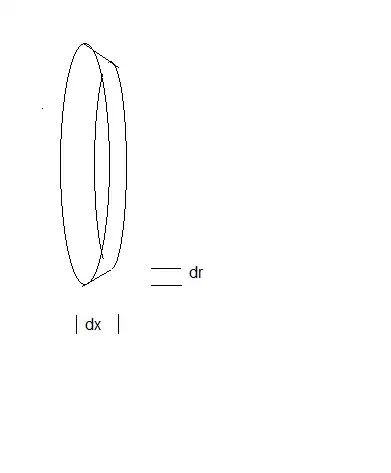Here's how my book derives the formula for the volume of the sphere:
A sphere can be thought of as the solid of revolution generated by revolving a semicircle about its diameter (see the figure below). If the equation of the semi-circle is $x^2+y^2=a^2$, then the element of volume is $dV=\pi y^2dx=\pi(a^2-x^2)dx$ and the volume of the sphere is given by $$V=2\int_0^a{\pi(a^2-x^2)dx}=\frac{4}{3}\pi a^3$$
So I thought: well, I know that the 'lateral' surface area of the element of volume $dV$ is just the circumference times a little change in $x$, so by the same reasoning the area of the sphere should be given by
$$2\int_0^a{2\pi\sqrt{a^2-x^2}dx}$$
That way we should be able to cover the whole surface of the sphere. Sure, there would still be an extra "peeling" around the outside of the strip, but as the book says, just as in the calculation of the volume, "this slight apparent error - due to using disks instead of actual slices - disappears as a consequence of the limit process that is part of the meaning of the integral sign.".
It turns out, however, that that integral does not equal $4\pi a^2$. So, what is wrong with my reasoning? Thanks in advance.

